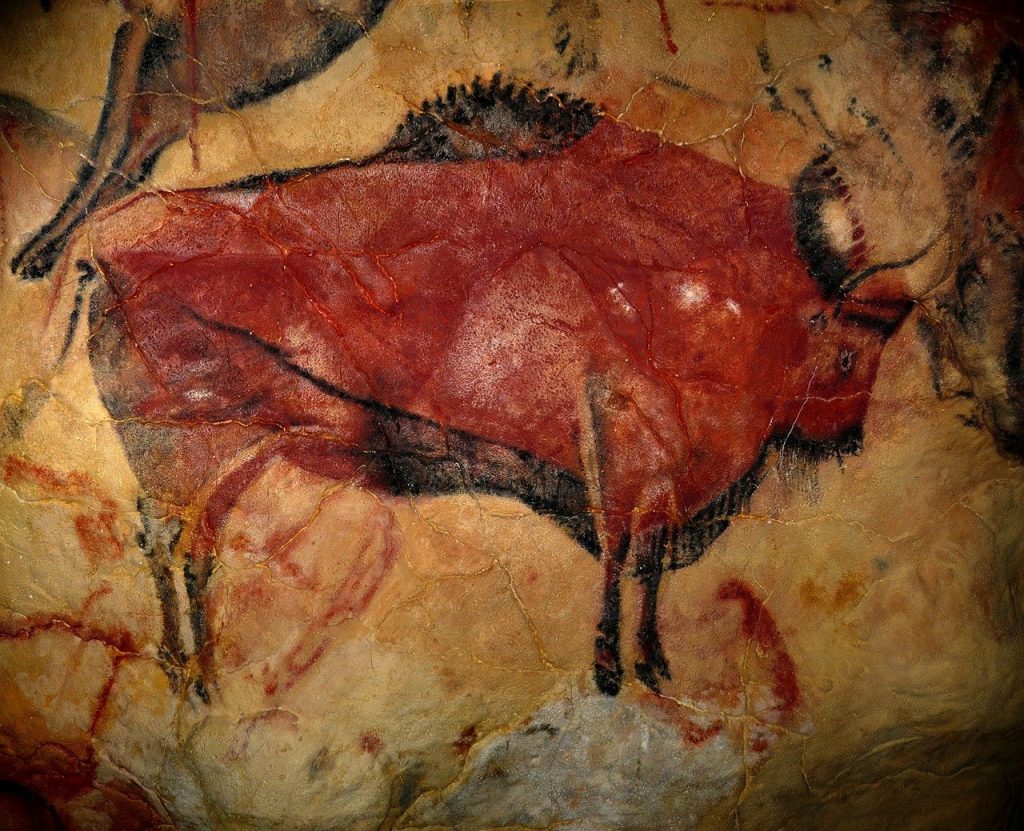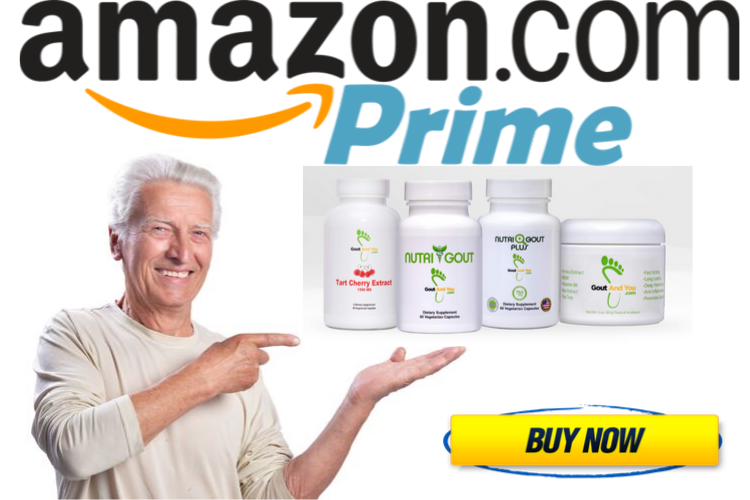
The Paleo diet, aka the Caveman diet, is based on what our hunter-gatherer ancestors ate millions of years ago. It’s supposed to make us healthier. But is it safe with gout? Read on to discover why we gout sufferers shouldn’t touch it with a ten-foot pole.
The Paleo Diet and Gout
Gout is a type of inflammatory arthritis cause by abnormally high levels of uric acid in the blood; a condition called hyperuricemia. A painful gout flare (also called a gout attack) occurs when tiny crystals of monosodium urate appear out of the acid and accumulate in the joints and surrounding tissue.
Uric acid is a byproduct of purine metabolism. Purines are natural compounds found in our body’s cells and at varying levels in the food we eat. Foods with the highest purine content are usually high-protein foods, such as organ meat, game, red meat, poultry and seafood.
We gout sufferers are usually advised to avoid high-purine foods which, in effect, means avoiding many high-protein foods.
But, given that the Paleo diet emphasizes animal protein, is it suitable for someone who has been diagnosed with gout?
Let’s dive a little deeper into the Paleo diet…
The so-called Paleo diet takes its name from the Paleolithic period when we were hunter-gatherers: before agriculture was discovered (around 12,000 years ago).
Hunter-gatherers lived off of wild plants, seeds, nuts, fruit, and the fish and animals they caught, trapped, and killed. Farming hadn’t been invented yet so there were no cultivated grains or legumes and no farmed animals.
The modern Paleo diet (also known as the Caveman or Stone-Age diet) is generally recognized as having been pioneered by gastroenterologist Walter Voegtlin in his book The Stone Age Diet published in 1975.
Voegtlin believed that our genetics and anatomy have changed very little since the Stone Age. He was convinced that we modern humans are better matched to (and would be much healthier if we reverted to) our Paleolithic ancestors’ diet with its emphasis on plant foods and grass-fed animal protein.
The Paleo diet of today consists only of foods that are believed to have been available to our ancient forebears: lean meat (preferably grass-fed), fish, vegetables, fruit, nuts and seeds.
So no processed foods, no wholegrains, no legumes, no sugar, no potatoes, no processed oils, and no coffee. Dairy is also banned as ancient hunter-gatherers hadn’t yet domesticated animals. And, of course, there wasn’t any refined salt: so no salt.
But the diet has its critics…
Critics of the Paleo diet point out that it isn’t clear that our ancestors all ate the same diet. Geography and climate would have had a major impact on the food available to them.
In other words, different hunter-gatherer groups may have had different diets according to the continent and territory they roamed through.
They also point out that avoiding whole grains, legumes, and dairy means missing out on their highly beneficial nutrients, such as fiber, protein, vitamins, minerals, and antioxidants that help to hoover-up free radicals that cause illness and aging.
In addition, many studies show that whole grains reduce the risk of heart disease, diabetes, obesity and some cancers. And we really don’t know for sure that hunter-gatherers didn’t, in fact, eat wild grains and legumes.
That being said, a few small clinical trials have indicated that the Paleo Diet may be somewhat more beneficial in terms of weight loss, blood pressure, cholesterol, and glycemic management than other healthy diets, such as the Diabetes and Mediterranean diets.
However, they note that more trials are needed to truly understand the benefits (and potential risks) of the Paleo Diet.
Is the Paleo Diet Good for Gout?
We gout sufferers are usually advised to avoid or limit high-purine foods, such as organ meats, game, fatty red meat, poultry, fish and shellfish. So, on that basis alone, it would seem that the diet wouldn’t be suitable for people with gout.
But let’s look a little closer at the “pros” of the diet and see if those could outweigh the “cons” as far as gout is concerned…
The Paleo diet is very low in sugar, which sugar has been associated with increased inflammation and, especially in the case of fructose and high fructose corn syrup (HFCS), increased uric acid and a higher risk of gout. So a low sugar diet is good for gout.
On the whole, the Paleo diet is an alkaline diet. And a 2010 study by Aya Kanbara et al, concluded that alkalizing urine through diet facilitates the removal of uric acid from the body. So having an alkaline diet is good for gout too.
And one of the most important features of the Paleo diet is its low-glycemic load. High-glycemic foods can inhibit the kidneys’ ability to excrete uric acid effectively. So a low-glycemic diet is also good for gout.
These three pros seem to suggest that the Paleo diet may actually be good for gout.
Except that…
Let’s not forget that those three “pros” for gout aren’t the preserve of the Paleo diet. Many diets, like the Mediterranean diet and the Dietary Approaches to Stop Hypertension’ (DASH) diet, can also provide these advantages.
In fact, a 2016 study, carried out by researchers at Johns Hopkins University School of Medicine showed that hypertension patients on the DASH diet also experienced significant reductions in blood uric acid, particularly those with levels above 6 mg/dL.
In addition, although heart-healthy whole grains (missing in the Paleo diet) have a high glycemic index — yes that surprised me too — they are low in purines. So they’re safe in a gout diet as long as they’re consumed in moderation. Thus we can get all their health benefits without risking a gout flare.
Finally, other studies have shown that bone-healthy dairy (also missing in the Paleo diet) may help to reduce uric acid.
So, by totally banning whole grains, and dairy, the Paleo diet not only restricts the amount of very valuable nutrients available to you it also removes at least one food source that may actually reduce your risk of gout.
And we can’t escape the fact that a key part of the Paleo diet is high-purine animal protein which has scientifically proven associations with painful recurrent gout flares.
However, as gout sufferers, we don’t need to completely avoid all animal and fish protein. Some of these proteins are only moderately high in purines.
For example:
- lean beef
- lamb
- pork
- chicken
- duck
- turkey
- haddock
- hake
- cod
- flounder
- etc.
These may be eaten in a limited fashion without increasing our gout risk. Limited means 1 x 3.5 oz (100 g) serving per day. And better if not every day; say 4 to 6 times (max) per week, at least half of which should be fish for their omega-3 content.
Conclusion
On balance then, although the Paleo diet won’t cause gout, we can get all of the advantages of Paleo, but without its health disadvantages, by eating moderate amounts of *selected animal and fish protein along with lots of fresh vegetables, fruit, nuts, and seeds, as well as low-fat dairy produce and some whole grains.
Now, you might say, “This is just Paleo diet lite.” Well, it’s true we’re eating animal and fish protein, but only in moderation and only moderate-purine proteins. And we’re consuming dairy and some wholegrains and legumes, which are banned in the Paleo diet. So it isn’t a lite version of Paleo but, rather, a well-balanced, healthy gout diet.
*These proteins have to be avoided as they’re high in purines:
- horse meat
- all organ meat (e.g., kidneys, liver, heart, sweetbreads, etc.)
- all game (e.g., wild boar, squirrel, grouse, pheasant, quail, etc.)
- some fish (e.g., anchovies, sardines, whitebait, herring, trout, halibut, mackerel, etc.)
- some shellfish (clams, langoustines, mussels, oysters, prawns, shrimp, etc.)
And avoid sugar, especially fructose and HFCS, which are present in most processed foods, snacks, and fizzy drinks.
[Note: You’ll discover the purine content of hundreds of foods along with sample menus in my new guide Gout Rescue.]



